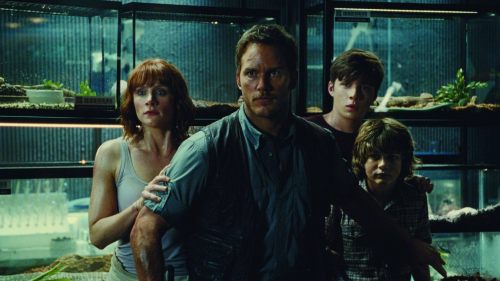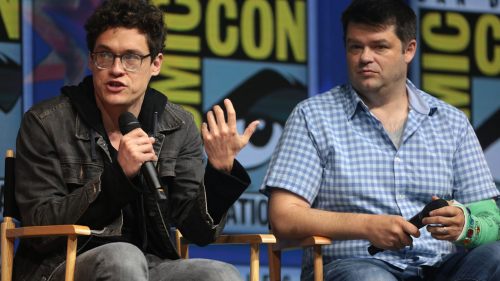THE LEGO MOVIE 2 And Our Extended Adolescence
This article contains spoilers for The LEGO Movie 2: The Second Part.
The LEGO Movie 2: The Second Part is not quite so clever as the first film, but that is a monumental bar to live up to. Whereas The LEGO Movie had the luxury of building up to the ultimate reveal that the LEGOs’ struggle against President Business was actually the metaphorical deconstruction of a child’s strained relationship with his father, the sequel has no choice but to go in with that metaphysical foreknowledge already intact, meaning that any philosophy of childhood psychology the film has to impart is inherently obvious from the start. And thankfully, The LEGO Movie 2 realizes this disparity in storytelling styles and leans into it, sacrificing the surprise of metafictionalism for a story that emphasizes that metaphor in much more literal terms.
What evolves is a story of sibling rivalry, where the invading force of the DUPLO LEGOs - a more pastel, larger block version of the buildable bricks aimed specifically at younger children - and decidedly more feminine LEGOs invade the world of the first film, leading that world to transform into an apocalyptic wasteland. The details eventually come into focus, but the allegory is clear from the start: Finn, the boy from the first movie, has had his newfound freedom to play with his father’s LEGOs interrupted by the influence of his little sister, Bianca, who invades his play space and pushes him to emulate angsty adulthood in an effort to differentiate himself from his more childish sibling. This manifests as darker, more brooding attitudes in his settings and characters, reflective of the adolescent mind that developed over the five years since the events of the first film, though LEGO protagonist Emmet, voiced by Chris Pratt, still retains a sense of wonder and joy that is otherwise lost in a world overtaken by chaos.
Contrast this with the more joyful world of the not-so-subtly named Sis-Star System, which is populated by happy characters covered in glitter. It’s a different sort of world than that of Finn’s childhood fantasies, which the kidnapped Master Builders of his world immediately understand to be hostile and alienating, and so too do we, the audience. There is even a musical number – one of many in a marked tonal departure from the original film – about Queen Watevra Wa’Nabi claiming in severely unconvincing terms that she is not the Bad Guy of this story, only to actually not be the villain.
That distinction goes to Rex Dangervest, also voiced by Chris Pratt, who serves as Emmet’s guide in the quest to save his friends from the wedding they were kidnapped to take part in. Rex turns out to be Emmet from the future, a hardened manifestation of loneliness and hate that pushes the conflict between Emmet and the Sis-Star System to the point of destruction in the name of aspirational coolness. As Rex blatantly points out in a piece of metahumor at the film’s climax, his and Emmet’s contrast is the representation of the loss of imagination in an adolescent mind, wherein Finn feels his style of play is now so substantively different from his sister’s that her encroachment on his space is seen as a threat to achieving adulthood. In the end, the siblings are able to unite in a new kind of play that complements one another’s personalities, and we’re once again treated to a story of cartoon toys playacting the discordant personalities of the family that plays with them.
And yet, there’s something more to this story than redundant sequelizing. In a sense, Finn is a reflection of his father from the first film, so firm in the belief that his style of play is the most appropriate for the family LEGO collection that he is actively willing to destroy Bianca’s creations for the sake of preserving that dynamic. The ultimate irony of this is that LEGOs, by their very nature, are constructible into any number of shapes and configurations, whether that means the impossible meeting of Batman and Gandalf or the absurdist architecture of the Sis-Star System’s skyscrapers and crystalline palaces. The whole idea of LEGOs is that they are infinite in their possibilities, and by extension, so too are our passions.
This is where it not only becomes a story about child psychology but the adult evolution of that psychology, and how some of us have become stunted by the perception that our manner of play is empirically best. Look at Rex Dangervest. On the surface, his character archetype is an extended joke at the expense of his voice actor, lampooning Chris Pratt’s iconic action movie roles into an amalgamation of masculine bravado. But when you peel back the individual elements of those references, not only do you find masculine ideation but a sense of nostalgia. The allusions to Pratt’s role in Jurassic World and his rumored involvement in an Indiana Jones reboot are modern revivals of franchises heralded as classic, developmentally influential to many of the parents who brought their kids to this movie, while Rex’s most direct inspiration, Peter Quill of Guardians of the Galaxy, is a walking ode to the culture and iconography of the 1970s and '80s. Even the joke about how Rex lost all his baby fat to become chiseled is a reference to Pratt’s time on Parks and Recreation, a show that showed him as lovable and childish before his transformation into an actor to be taken more seriously in major blockbusters as a star and sex symbol.
Now think about how this sense of nostalgia and idealized adulthood permeates our present popular culture, particularly for how it pertains to how we consume film and television. A very large percentage of the franchises we hold precious are carryovers from when we were children, whether we read the comic books that formed the basis for modern superhero movies, played with Transformers or Pokemon, or made a lightsaber or wizarding wand out of a wrapping paper tube. Most of these franchises came into being when we were ourselves children or before we were even born, and their continued existence within our culture is a testament to just how formative those properties were for us.
But what does this have to do with Rex? What you have to remember about Rex, despite the constant affirmation through the film’s second act that he is the coolest ideal for Emmet to strive for, is that he is ultimately responsible for the destruction that threatens Finn and Bianca’s ability to play at all. His real-life equivalent is the arrested development of someone who complains about a female-centric Ghostbusters or the inclusion of more prominent women and minorities in The Last Jedi. The toys of our childhood have grown and evolved to appeal to new demographics and new generations, most notably generations that have become demonstrably more inclusive of diverse backgrounds and experiences. And Rex’s impulse is to destroy the building blocks of childhood wonder, rather than accept that there may be more ways than one with which to play with those blocks.
The point of Finn’s evolution and the ultimate defeat of Rex within his psyche is not that he needs to embrace everything about how Bianca plays with LEGOs. The pair are shown to play cooperatively at the story’s end, but this does not mean that they have adopted one another’s style; far from it, their stylistic preferences are shown to co-exist and create something new through their contrast. Finn doesn’t have to like his sister’s aesthetic sensibilities to get along with her or to be a role model worth looking up to. He’s no longer the kind of person who perceives difference as a threat, who thinks of his childhood pastime as so sacred as to be immune to evolving influences and differing perspectives.
I think our most prescient representation of this acceptance is the LEGO woman Lucy’s embrace of her natural hair colors, blue and purple. She colored her hair black to affect a sense of cool brooding, but that’s not what being a grown-up is, even as we idolize figures of pop culture who portray that as the meaning of adulthood. Lucy acts as the part of Finn’s mind that recognizes empathy, seeing how Rex’s advocacy for destruction is the antithesis to the passion Finn and Bianca both have for their LEGOs. So Lucy doesn’t dye her hair back to black, instead keeping her natural pastel hues as a symbol of Finn’s acceptance of a style different from his own. The moral isn’t just that siblings can share a little of themselves with one another; it’s that our passions should not be used as a weapon against those who wish to share in them, even if their expression of that passion is different from our own.



